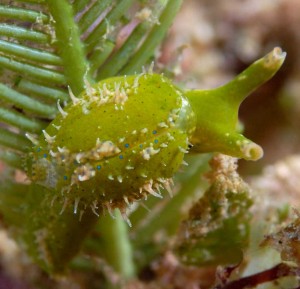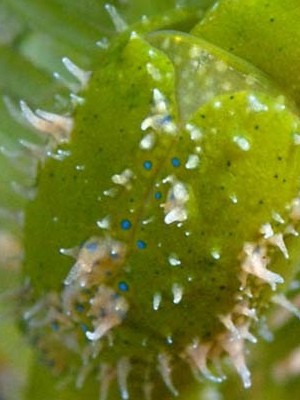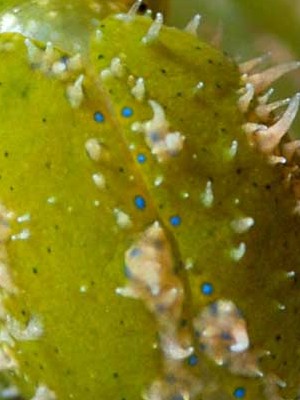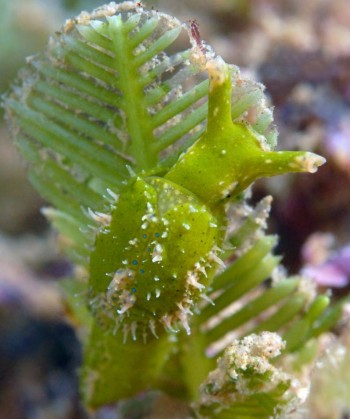Oxynoe panamensis from Pacific coast of Mexico
December 2, 2009
From: Kevin Lee

Dear Bill
These beauties were found by Alicia Hermosillo. Nearly invisible on the Caulerpa, they were on.
Locality: Los Arcos, Puerto Vallarta, 25fsw, Mexico, East Pacific, 04 July 2009, Rocky reef, on uw plants. Length: 1/2 inch. Photographer: Kevin Lee.
K:-)
diverkevin@gmail.com



Dear Kevin,
This is certainly what has been identified as Oxynoe panamensis but as we can see from Japanese animals [message #4946], specimens of Oxynoe viridis from the western Pacific can have an identical colour pattern.
Unfortunately the identity of O. panamensis is, I think, a bit of a puzzle. It was described on the basis of its shell alone, and nothing is known of its anatomy, and more importantly the shells were from the Caribbean side of Panama. As the shells of species of Oxynoe are not always distinctly different it is possible that O. panamensis is a synonym of the Caribbean species O. antillarum. While there are examples of species occurring on both sides of the Panama Isthmus this really doesn't resolve the identity of these East Pacific animals. I suspect there is no way of being sure if O. panamensis is the same as either of the other Caribbean species, O. azuropunctata Jensen, 1980 and O. antillarum.
So are the east pacific animals similar to either of the known Caribbean species? Certainly Oxynoe azuropunctata, as its name implies, has blue spots. As we get to know the central American faunas better we need to seriously consider whether these blue-spotted species on each side of the Panama Isthmus are just populations of one species. And more significantly are they synonymous with the widespread Indo-West Pacific species O. viridis. In your recent message [#22899] we accepted the Indo-West Pacific species Elysiella pusilla to be present in the East Pacific, so accepting O. viridis has a circumglobal distribution is not that outrageous an idea. But first these species need to compared anatomically.
if anyone has photos of a blue-spotted Oxynoe from the Caribbean, especially in the Florida area it would be a valuable addition tot he forum as it would almost ceratinly be the animals described by Kathe Jensen as Oxynoe azuropunctata.
Best wishes,
Bill Rudman
